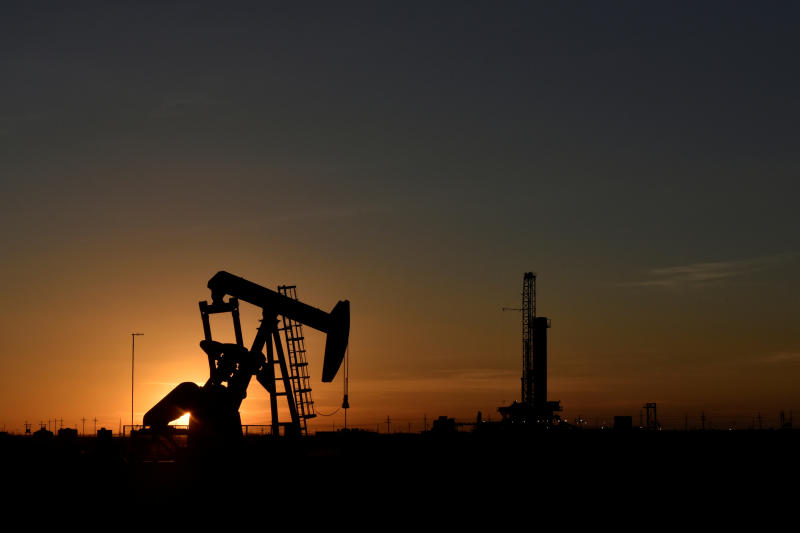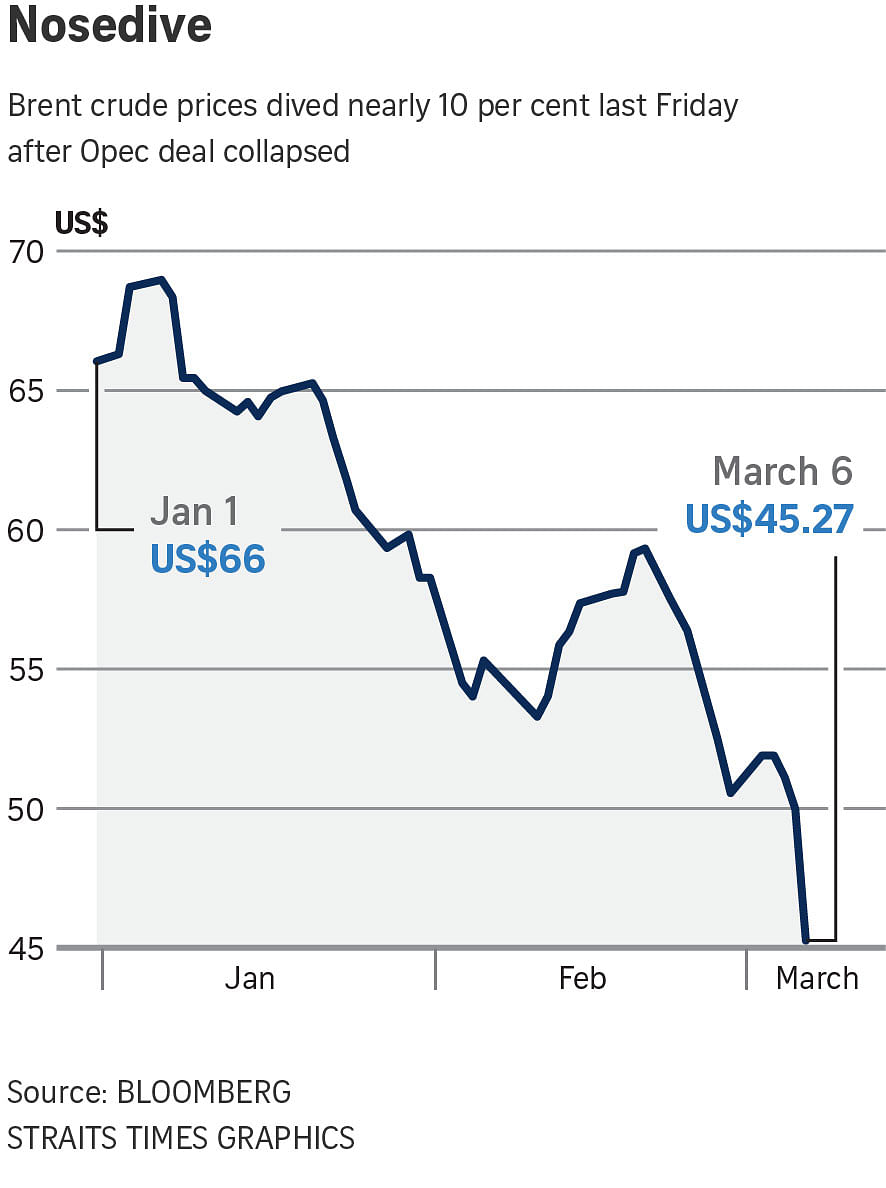Saudis to raise oil output, beginning all-out price war amid coronavirus crisis
Sign up now: Get ST's newsletters delivered to your inbox

The world's largest oil exporter started a price war on March 7, 2020, by slashing the prices it sells crude to foreign markets by the most in at least 20 years.
PHOTO: REUTERS
Follow topic:
DUBAI (BLOOMBERG) - Saudi Arabia plans to increase oil output next month, going well above 10 million barrels a day, as the kingdom responds aggressively to the collapse of its Opec+ alliance with Russia amid a coronavirus shock to demand.
The world's largest oil exporter started a price war on Saturday (March 7) by slashing the prices it sells crude to foreign markets by the most in at least 20 years, offering unprecedented discounts in Europe, the East Asia and the US to entice refiners to purchase Saudi crude at the expense of other suppliers.
At the same time, Saudi Arabia has privately told some market participants it could raise production much higher if needed, even going to a record of 12 million barrels a day, according to people familiar with the conversations who asked not to be named to protect commercial relations. With demand being ravaged by the coronavirus outbreak, opening the taps like that would throw oil market into chaos.
In the first instance, Saudi production is likely to rise above 10 million barrels a day in April, from about 9.7 millions a day this month, according to people familiar with Saudi thinking.
"That's the oil market equivalent of a declaration of war," said a commodities hedge fund manager, asking not to be named due to the sensitivity of the situation.
MAXIMUM PAIN
The shock-and-awe Saudi strategy could be an attempt to impose maximum pain in the quickest possible way to Russia and other producers in an effort to bring them back to the negotiating table, and then quickly reverse the production surge and start cutting output if a deal is achieved.
Brent crude, the global oil benchmark, already dived 9.4 per cent to US$45.27 a barrel on Friday, its biggest daily drop since the global financial crisis in 2008, after Russia balked at Opec's proposed cuts to stabilise prices.
The production increase and deep discounts mark a dramatic escalation by Prince Abdulaziz bin Salman, the Saudi oil minister, after his Russian counterpart, Mr Alexander Novak, rejected an ultimatum on Friday in Vienna at the Opec+ meeting to join in a collective production cut. After the talks collapsed, Novak said countries were free to pump-at-will from the end of March.
"Saudi Arabia is now really going into a full price war," said Mr Iman Nasseri, managing director for the Middle East at oil consultant FGE.
RECORD DISCOUNTS
With jet fuel, petrol and diesel consumption rapidly falling due to the economic impact of the coronavirus outbreak, the energy market now faces a simultaneous supply-and-demand shock.
After the failure in Vienna, Riyadh responded within hours by cutting its so-called official selling prices (OSP), offering record discounts for some of the crude it sells worldwide, according to a copy of the prices seen by Bloomberg News. Aramco has set the prices, but the official communication to clients is likely to come on Monday, a person familiar with the matter said.
The Saudi Energy ministry did not respond to a request for comment.
Last month, Saudi Arabia not only implemented the Opec+ output cuts, but "voluntarily" restrained its production even further in an effort to lift prices. When the Opec+ deal expires in three weeks, Riyadh will be able to pump as much as it wants.
Aramco tells refiners each month the price at which it will sell its crude, often adjusting the OSP by a few cents or as much a couple of dollars. But on Saturday, Aramco told customers it was slashing official prices by US$6-US$8 a barrel across all regions. The dramatic move will resonate beyond Saudi Arabia. The kingdom's pricing decision affects about 14 million barrels a day of oil exports, as other producers in the Persian Gulf region follow its lead in setting prices for their own shipments.

GETTING NASTY
In the most significant move, Aramco widened the discount for its flagship Arab Light crude to refiners in north-west Europe by a hefty US$8 a barrel, offering it at US$10.25 a barrel under the Brent benchmark. In contrast, Urals, the Russian flagship crude blend, trades at a discount of about US$2 a barrel under Brent. Traders said the Saudi move was a direct attack at the ability of Russian companies to sell crude in Europe.
"This is going to get nasty," said Mr Doug King, a hedge fund investor who co-founded the Merchant Commodity Fund. "Opec+ is going to pump more, and the world is facing a demand shock. US$30 oil is possible."
Oil traders are looking to historical charts for an indication of how low prices could go. One potential target is US$27.10 a barrel, reached in 2016 during the last price war. But some believe the market could go even lower.
"We're likely to see the lowest oil prices of the last 20 years in the next quarter," said Mr Roger Diwan, an oil analyst at consultant IHS Markit and a veteran Opec watcher, implying that the price could fall below US$20 a barrel.
Brent crude, the global benchmark, fell to a low of US$9.55 a barrel in December 1998, during one of the rare price wars that Saudi Arabia has launched over the last 40 years.

